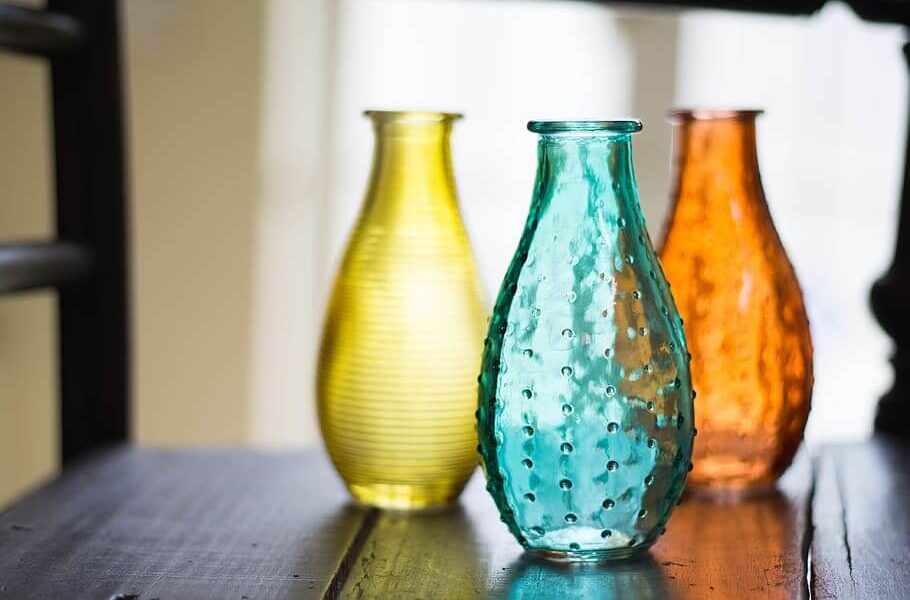Milk Glass Vases: A Timeless Beauty
Introduction
In the ever-evolving world of home decor, where trends come and go, few items like milk glass vases have stood the test of time. These delicate yet sturdy beauties have graced homes for centuries, captivating collectors and design enthusiasts with their understated elegance and timeless charm.
Imagine running your fingers along a milk glass vase’s smooth, opaque surface, marveling at its ability to diffuse light in a soft, ethereal glow. These pieces are more than just vessels for floral arrangements; they are works of art that seamlessly blend functionality and aesthetics, offering a touch of vintage allure to any space they adorn.

The origins of milk glass can be traced back to the accidental discoveries of glassmakers in the 16th Century, who stumbled upon the unique opaque quality while experimenting with various glass formulas. What started as a happy accident quickly became a sought-after material, with skilled artisans refining the techniques and creating exquisite pieces that embodied the essence of their respective eras.
From the ornate Victorian designs to the sleek lines of the Art Deco period, milk glass vases have evolved alongside each generation’s ever-changing tastes and styles. Yet, their enduring popularity lies in their aesthetic appeal and ability to transcend trends and seamlessly integrate into diverse decor styles, from vintage-inspired farmhouse chic to contemporary minimalism.
In this comprehensive exploration of milk glass vases, we’ll delve into their rich history, unraveling the stories behind their conception and the artisans who brought them to life. We’ll explore the vast array of shapes, colors, and patterns that have emerged over time, each a testament to the creativity and craftsmanship of the makers.
Whether you’re a seasoned collector or someone captivated by the beauty of these timeless pieces, this article will serve as a guide, offering valuable insights into caring for, displaying, and appreciating the enduring charm of milkglass vases.
The Origins and Evolution of Milk Glass
From humble beginnings, as an accidental discovery to the cherished collectible it is today, the history of milk glass is a captivating tale of innovation, artistry, and enduring appeal. Let’s embark on a journey through time, unraveling the origins and evolution of this enchanting glassware.
Early Beginnings
In the 16th Century, European glassmakers stumbled upon a unique opaque glass while experimenting with various formulas and techniques. The resulting material, later dubbed “milk glass,” possessed a distinctive milky-white hue and a soft, velvety appearance that set it apart from traditional transparent glass.
This serendipitous discovery caught the attention of glassmakers and artisans, who began exploring its potential for creating decorative and functional pieces. The early pioneers were the New England Glass Company and the Boston & Sandwich Glass Company, both based in the United States.
Characteristics of early milk glass pieces:
- Opaque, milky-white coloration
- Thicker glass walls
- Simple, functional designs (e.g., pitchers, bowls, vases)
The Victorian Era
As the 19th Century dawned, milk glass found its actual moment in the spotlight, becoming a beloved material among the affluent classes of the Victorian era. The intricate designs and ornate flourishes that defined Victorian aesthetics were a perfect match for the unique properties of milk glass.
Manufacturers across Europe and America embraced this trend, producing a wide range of decorative pieces, including:
- Elaborately embossed vases
- Hobnail-patterned bowls and compotes
- Painted and enameled wares
Notable manufacturers and patterns from the period:
| Manufacturer | Notable Patterns |
| Bakewell Glass Company (England) | Bramble, Blackberry |
| Boston & Sandwich Glass Company (USA) | Scroll, Flute |
| Fenton Art Glass Company (USA) | Hobnail, Crocus |
Milk Glass in the 20th Century
As the Victorian era came to a close, milk glass experienced a decline in popularity, but it was far from forgotten. A renewed interest in this adaptable material was brought about by the Art Deco style of the 1920s and 1930s, with designers embracing its clean lines and modern sensibilities.
During the Great Depression, milk glass experienced a surge in demand due to its affordability and timeless appeal. Manufacturers like Anchor Hocking and Hazel-Atlas produced various functional and decorative pieces, often featuring patterns like Miss America, Mayfair, and Crisscross.
In the mid-20th Century, milk glass once again captured the attention of collectors and enthusiasts, leading to a revival in production by companies like Fenton Art Glass and Imperial Glass. Contemporary makers continue to explore new designs and techniques, ensuring the enduring legacy of this beloved glassware.
As we trace the origins and evolution of milk glass, one thing becomes clear: its timeless beauty and versatility have transcended eras, captivating generation after generation with its unique charm and appeal.
Varieties of Milk Glass Vases: A World of Shapes, Colors, and Patterns
When it comes to milk glass vases, the possibilities are truly endless. These timeless beauties come in an enormous assortment of forms, colors, and patterns, one more intriguing than the next. They can be delicate and exquisite or flamboyant and statement-making. Let’s dive into the mesmerizing world of milk glass vase varieties and explore the remarkable diversity that has made them cherished collectibles for generations.
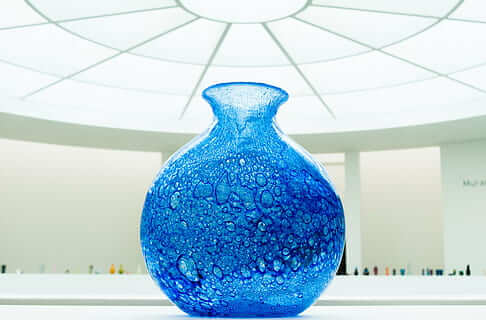
Shapes and Styles
Milk glass vases come in a variety of designs, from sleek and minimalist to elaborate and ornate, just like the designers who created them. Here are some of the most iconic and beloved forms:
Classic Vase Shapes
- Pitchers: Graceful and practical, these vases often feature curved handles and tapered necks, making them perfect for displaying fresh blooms.
- Urns: Reminiscent of ancient Greek pottery, urn-shaped vases exude timeless elegance, adorned with intricate patterns or simple, clean lines.
- Compotes: In the 18th Century, compotes featured a footed base and a shallow, flared top, ideally suited for showcasing fruit or delicate floral arrangements.
- Epergnes: These grand centerpieces consist of multiple arms or branches extending from a central stem, creating a stunning display for various floral or plant arrangements.
Ornate and Decorative Styles
- Hobnail: Featuring a raised, textured surface resembling the studs on a horse’s saddle, hobnail milk glass vases possess a delightful tactile quality and a vintage charm.
- Embossed: Raised patterns, from intricate floral designs to geometric motifs, adorn the surface of these vases, adding depth and interest.
- Ruffled or Crimped: With delicate, undulating edges reminiscent of ruffled fabric, these vases exude a soft, romantic appeal.
Colors and Patterns
While the classic opaque white is arguably the most iconic hue of milk glass, skilled artisans have pushed the boundaries, experimenting with a kaleidoscope of colors and intricate patterns that elevate these pieces to actual art.
Alluring Colors
- Soft Pastels: Delicate shades of pink, blue, green, and yellow imbue milk glass vases with a gentle, soothing presence.
- Vibrant Hues: Vases in deep, jewel-toned hues like amethyst, emerald, and ruby provide a striking contrast to any setting for those looking to make a bigger statement.
- Swirls and Marbling: Swirling patterns of two or more colors create a mesmerizing, one-of-a-kind effect on the surface of these vases.
Decorative Patterns and Treatments
- Hobnail: The raised, textured hobnail pattern is a classic and highly sought-after design.
- Embossed: Intricate raised patterns, from floral motifs to geometric designs, adorn the surface of these vases, adding depth and visual interest.
- Painted: Skilled artisans meticulously hand-paint designs on the surface of milk glass vases, creating truly unique and personalized pieces.
Manufacturers and Makers
Throughout the centuries, numerous manufacturers and individual artisans have contributed to the rich tapestry of milk glass vase designs, each leaving their unique mark on this beloved art form. Here are some of the most renowned names in the world of milk glass:
| Manufacturer | Country | Notable Contributions |
| Fenton Art Glass Company | USA | Pioneers in hobnail and carnival glass patterns |
| Imperial Glass Corporation | USA | Wide range of classic and contemporary designs |
| Westmoreland Glass Company | USA | Known for their signature “Paneled Grape” pattern |
| Bakewell Glass Company | England | Intricate bramble and blackberry embossed patterns |
| Doulton & Co. (Royal Doulton) | England | Renowned for their high-quality ceramics and glassware |
In addition to these well-known manufacturers, countless skilled artisans and small studios have contributed to the diversity of milk glass vases, ensuring that each piece is an actual labor of love and a testament to the enduring appeal of this timeless art form.
Whether you’re drawn to the clean simplicity of a classic white vase or captivated by the intricate patterns and bold colors of more ornate pieces, the world of milk glass vases offers something for every taste and style. Explore this enchanting realm, and you’ll soon discover that these timeless beauties are more than just vessels for floral arrangements – they are works of art that bring a touch of elegance and charm to any space they grace.
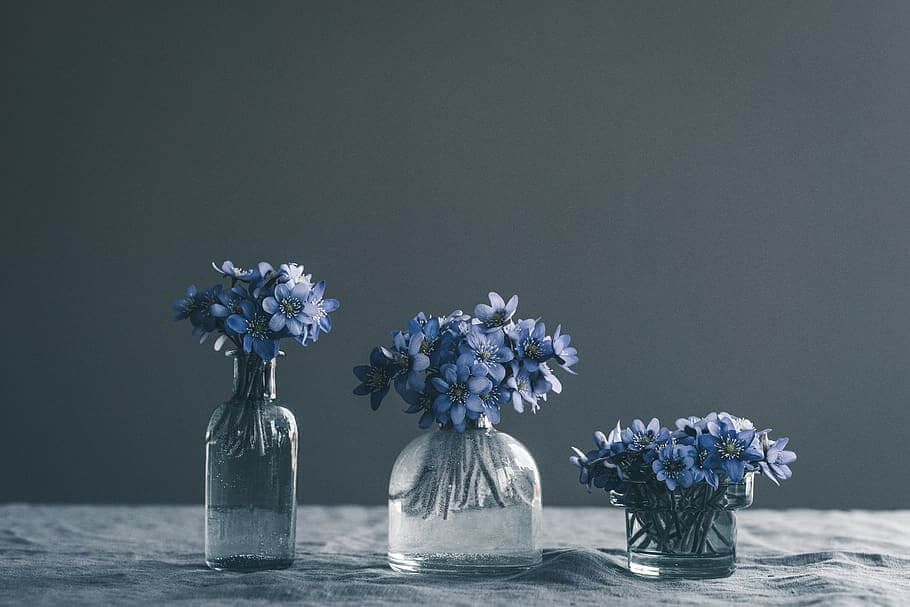
Caring for, Decorating With, and Collecting Milk Glass Vases: A Comprehensive Guide
Milk glass vases are beautiful and timeless and require proper care and handling to ensure longevity and preserve their charm. Additionally, these versatile pieces offer endless possibilities for creative decorating, allowing you to showcase your style. For those who have caught the collecting bug, milk glass vases can become a lifelong passion, with each piece holding a story and a piece of history. This comprehensive guide will delve into caring for, decorating with, and collecting these beloved treasures.
Caring for Milk Glass Vases
Your milk glass vases will lose some of their beauty and value if they are not properly cared for. Here are some essential tips to keep in mind:
Cleaning and Maintenance
- Gentle Cleaning: Milk glass is susceptible to scratches and discoloration, so avoid abrasive cleaners or scrubbing pads. Instead, use a mild soap and warm water or a solution of diluted vinegar and water.
- Handling with Care: Always handle milk glass vases carefully, avoiding knocks or drops that could lead to chips, cracks, or breaks.
- Dusting and Polishing: Regularly dust your vases with a soft, dry cloth to prevent buildup. For a gentle polish, use a microfiber cloth or a mild glass cleaner formulated explicitly for antique glass.
- Exposure to Light: Long-term exposure to direct sunshine might eventually cause milk glass to fade or turn yellow. Rotate your display or use window treatments to filter harsh light.
Repairing and Restoring
Even with proper care, milk glass vases may occasionally suffer from cracks, chips, or crazing (a network of fine cracks on the surface). Here are some options to consider:
- Professional Repair and Restoration: For valuable or sentimental pieces, it’s best to seek the expertise of a professional glass restorer who can provide high-quality repairs and restoration services.
- DIY Repair Methods: For minor cracks or chips, you can try DIY repair kits or clear epoxy adhesives designed for glass. However, these methods may not be as durable or seamless as professional repairs.
- Crazing: While crazing doesn’t affect the structural integrity of the vase, it can be unsightly. Professional restoration services may offer solutions like immersion in a specialized solution or applying a protective coating.
Decorating with Milk Glass Vases
Vases made of milkglass are adaptable ornamental items that go well with a variety of interior design themes. Here are some inspiring ideas to incorporate them into your home decor:
Styling and Arrangements
- Floral Arrangements: Milk glass vases are perfect for displaying fresh or dried floral arrangements, allowing the soft, diffused light to create a gentle, romantic ambiance.
- Candle Holders: The translucent quality of milk glass makes it ideal for displaying pillar candles or tealights, creating a warm and inviting atmosphere.
- Centerpieces: Group several milk glass vases of varying sizes and shapes to create a stunning centerpiece for your dining table or coffee table.
Mixing and Matching
- Vintage Charm: Pair milk glass vases with other antique or vintage pieces, such as lace runners, crystal chandeliers, or ornate picture frames, for a nostalgic, romantic vibe.
- Farmhouse Style: Incorporate milk glass vases into a farmhouse-inspired decor scheme by combining them with rustic wood elements, galvanized metal accents, and fresh greenery.
- Contemporary Flair: Juxtapose the timeless beauty of milk glass vases with modern, minimalist furnishings and clean lines for a chic, eclectic look.
Creative Displays
- Vignettes: Create eye-catching vignettes by grouping milk glass vases with complementary decorative objects, such as books, candles, or vintage figurines.
- Wall-Mounted Displays: Install floating shelves or wall-mounted racks to showcase your milk glass vase collection, creating a focal point in any room.
- Repurposed Pieces: Explore creative ways to repurpose milk glass vases, such as using them as unique planters or incorporating them into DIY lighting fixtures or chandeliers.
Collecting Milk Glass Vases
For many enthusiasts, collecting milk glass vases is a passion that can span decades, with each piece holding a unique story and historical significance. here’s what you need to know:
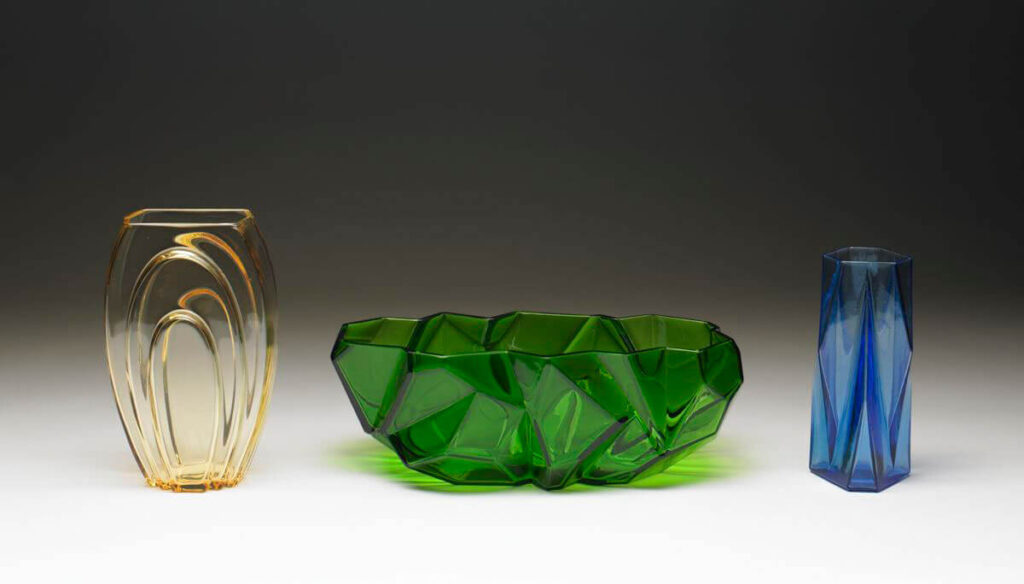
Building a Collection
- Determine Your Focus: Decide whether to collect a specific manufacturer, pattern, color, or style or pursue a more eclectic approach.
- Research and Educate Yourself: Study reference books, online resources, and collector forums to learn about identifying marks, production dates, and the rarity of different pieces.
- Attend Antique Shows and Auctions: These events offer excellent opportunities to find rare and unique pieces and network with other collectors and dealers.
Buying and Selling
- Reputable Sources: When purchasing milk glass vases, seek out reputable sources such as antique stores, online marketplaces (like eBay or Etsy), or trusted dealers to ensure authenticity.
- Evaluating Condition: Carefully inspect pieces for cracks, chips, crazing, or signs of repair, as these factors can significantly impact the value.
- Selling Your Collection: If you decide to sell your milk glass vases, research current market values and consider working with an experienced dealer or auctioneer to ensure fair pricing and proper handling.
Displaying and Storing
- Proper Storage: Your milk glass vases should be kept out of direct sunlight and dampness while not in use. Use acid-free materials for padding and wrapping.
- Thoughtful Displays: Create visually appealing displays by grouping pieces by color, pattern, or manufacturer, and consider using risers or shelves to showcase different heights and shapes.
- Rotating Your Collection: To prevent uneven fading or discoloration, periodically rotate the pieces in your display.
Whether you’re a devoted collector, a home decor enthusiast, or appreciate the timeless beauty of milk glass vases, caring for, decorating with, and collecting these pieces can be a rewarding experience. Embrace the charm of milk glass, and let these versatile vessels add a touch of vintage elegance to your living spaces while preserving a piece of history for generations to come.
Conclusion
It’s impossible not to be in awe of their enduring appeal and the rich tapestry of history they represent. From humble beginnings as a happy accident in 16th-century glassmaking workshops to their current status as cherished collectibles and versatile home decor pieces, these timeless beauties have stood the test of time, captivating generation after generation with their unique charm and beauty.
Throughout this comprehensive exploration, we’ve delved into the origins and evolution of milk glass, tracing its path from the ornate Victorian era to the sleek Art Deco designs and into the contemporary interpretations that continue to push the boundaries of this beloved art form. We’ve marveled at the vast array of shapes, colors, and patterns that have emerged over the centuries, each a testament to the creativity and craftsmanship of the skilled artisans who have dedicated their lives to this craft.
Proper cleaning, handling, and storage techniques are essential to preserving the beauty and value of these treasured pieces, ensuring that they can be enjoyed for generations to come. Whether you’re a seasoned collector or appreciate the vintage allure of milk glass, taking the time to understand and implement best practices in caring for these delicate beauties is a labor of love.
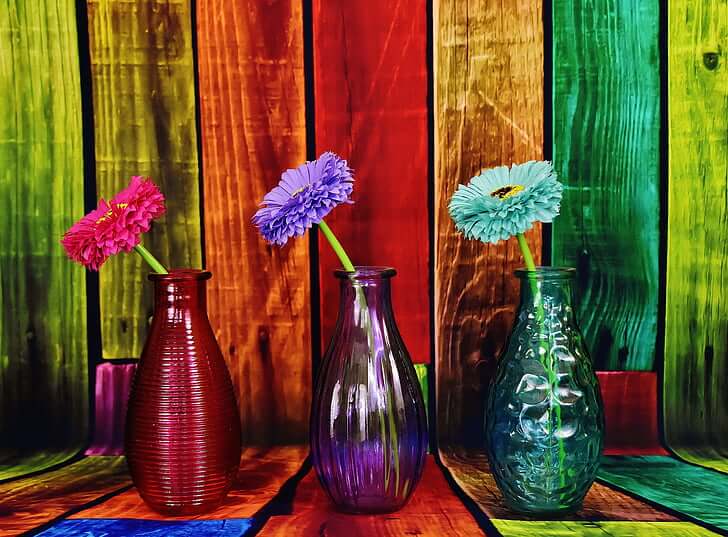
Decorating with milk glass vases offers endless possibilities, allowing you to infuse your living spaces with timeless elegance and charm. From showcasing stunning floral arrangements to creating warm, inviting centerpieces, these versatile vessels seamlessly blend with various interior design styles, from vintage-inspired farmhouse chic to contemporary minimalism. The soft, diffused light from milk glass adds a romantic ambiance to any space, making it a favorite among home decor enthusiasts and collectors.
For those who have caught the collecting bug, the pursuit of rare and unique milk glass vases can become a lifelong passion. Building a collection requires patience, knowledge, and a keen eye for identifying authentic pieces and evaluating their Condition. The thrill of discovering a long-sought-after treasure or adding a new piece to your growing collection is unparalleled, and the stories and histories behind each vase only deepen the connection between collector and collection.
It’s clear that milkglass vases are more than just decorative objects – they are living embodiments of history, art, and craftsmanship. Each piece holds a story, a whisper from the past that connects us to the skilled artisans and the eras that gave birth to these timeless beauties.

